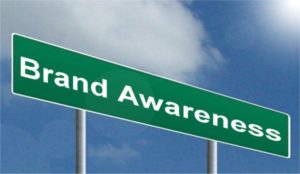
Sponsored content. Branded content. Paid content. No matter what you call it, there’s no argument that it’s becoming more common to see news outlets publishing these pay-for-play posts. If you’re unfamiliar with this term, this is when a company pays a publication to publish a self-promotional post. With social media breaking news before readers get to their websites and ad blocking apps causing decreased ad revenue, news outlets are looking for ways to bring in more money from consumers, which has led to the rise of sponsored content. The issue for readers is that they may confuse these posts with a news story. As you continue reading the news, be sure to ask yourself these three questions to avoid confusing a sponsored post with an earned media story.
1. Are there any mentions of “paid” or “sponsored” on the article? The easiest way to identify sponsored content is when the news organization tells you that’s what it is. How they tell you may vary from site to site, but it’s common to see websites mention it upfront, so readers are aware from the get-go. The New York Times, for example, lists at the top of the article, “Paid Post,” to be fully transparent (See these stories from Shell and General Electric). Other outlets, like in this article from Mashable, note at the beginning that this is from their sponsor.
2. Who authored the story? While a reporter may write a feature about a brand, in most cases, a reporter isn’t going to be writing a promotional post about a specific company. A sponsored post may not have a name associated with the article, rather it might, have “Staff” as the author. Others will actually list the brand itself as the author. Here’s an example of a sponsored piece on Forbes by Constant Contact. If you skip past the author and get right to the content, it’s easy to mistake these for news articles. The goal of these type of posts is to position the brand as an industry leader.
3. Are there links back to a company’s site? The content of sponsored articles may oftentimes be helpful or interesting, but the end goal is to drive people to the paying company’s website. This can be done in a variety of ways. One way that has become extremely popular is a quiz. People enjoy taking quizzes, so brands have positioned themselves within them. Here’s an example from Buzzfeed. Wendy’s is listed as the brand publisher, which, as described in question two above, would have been the first clue. In addition, at the end of the article, a new Wendy’s promotion is mentioned with a link to its menu. Another popular tool brands use in sponsored content is a list. In this Daily Hive article, Best Buy sponsors a post about which smartphone to buy for the holidays. As described in question one, you’ll notice that the post explicitly says, “presented by: Best Buy.” And if you kept reading, you’ll see a link at the end to Best Buy’s mobile website, to help you purchase your new phone.
A sponsored post can be a strategic way to place your client in front of its target audience. Used effectively, it can be mutually beneficial to both parties. However, tricking people into following your advice will cost you your followers’ trust, so being as transparent as possible is key to a successful sponsored post.
Great advice, both for consumers who need to be aware of the source of content, and agencies / clients, who can find benefit in the practice, provided it is done transparently.
Thanks, Johnny.